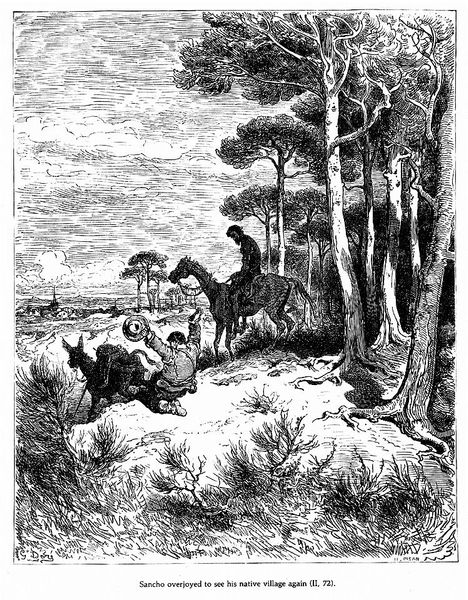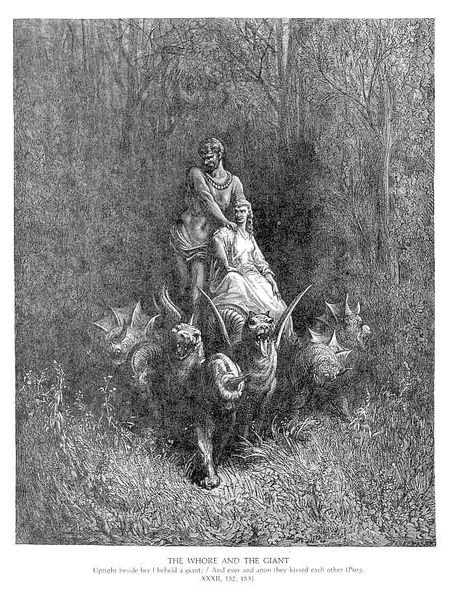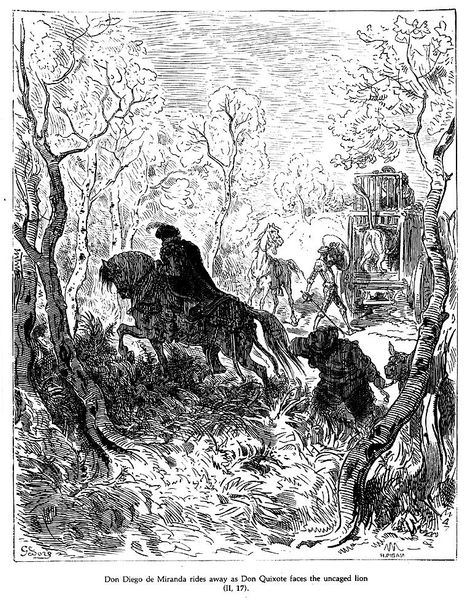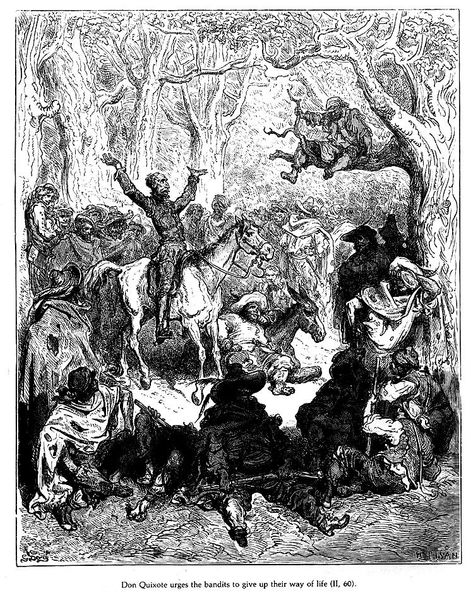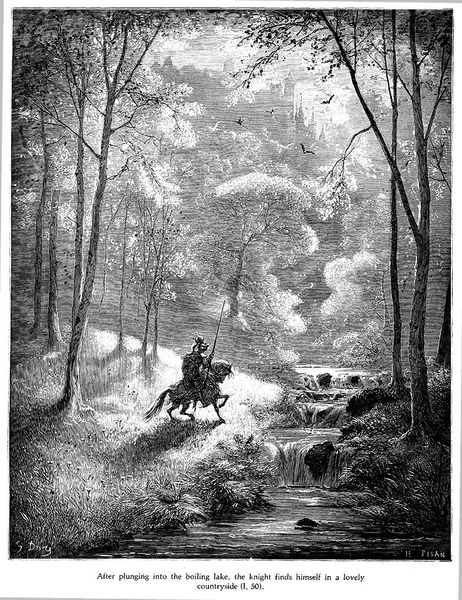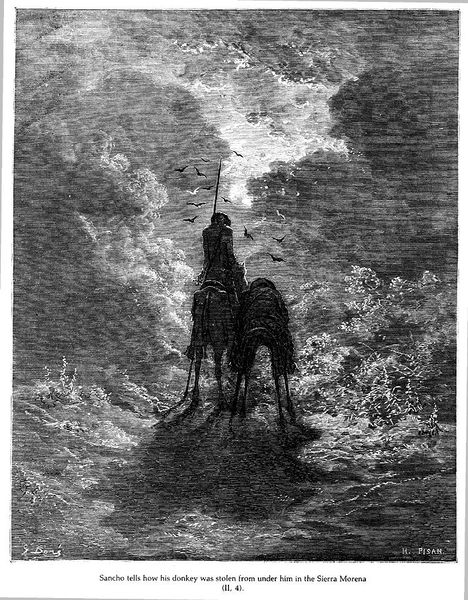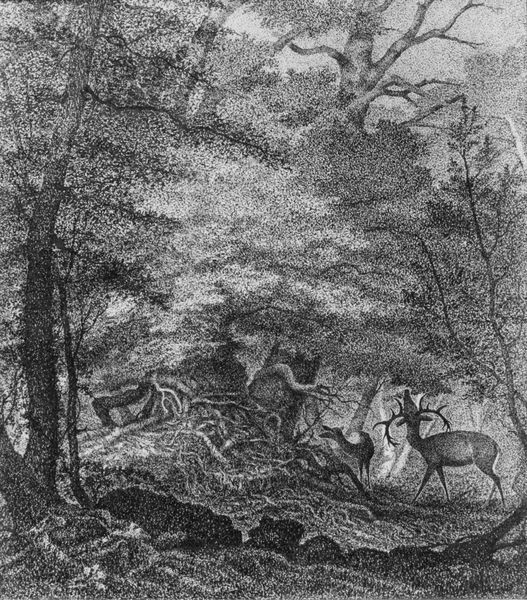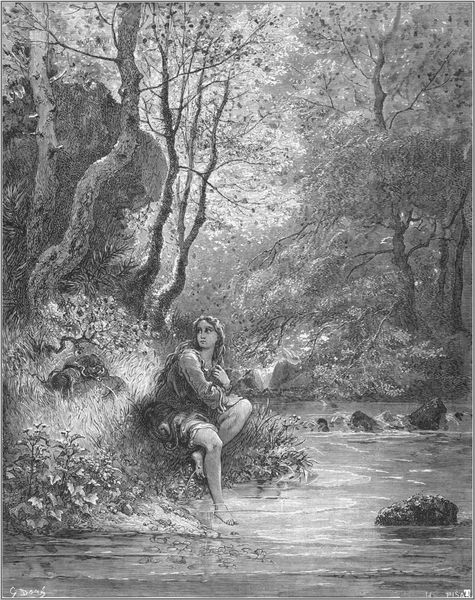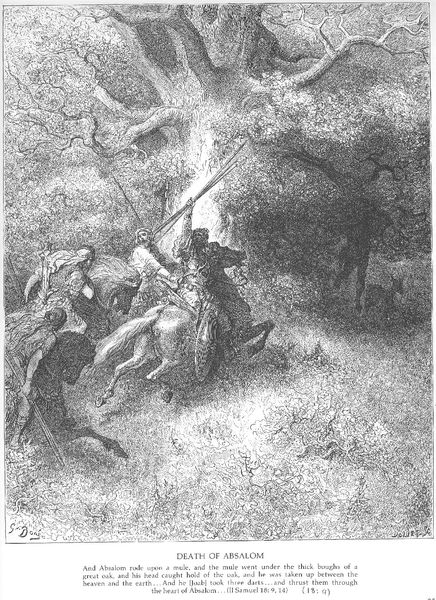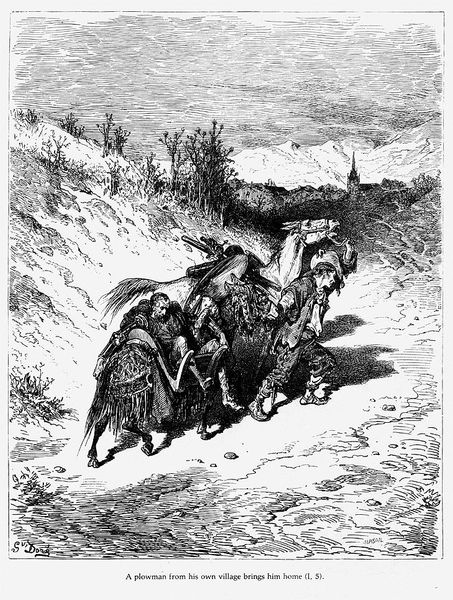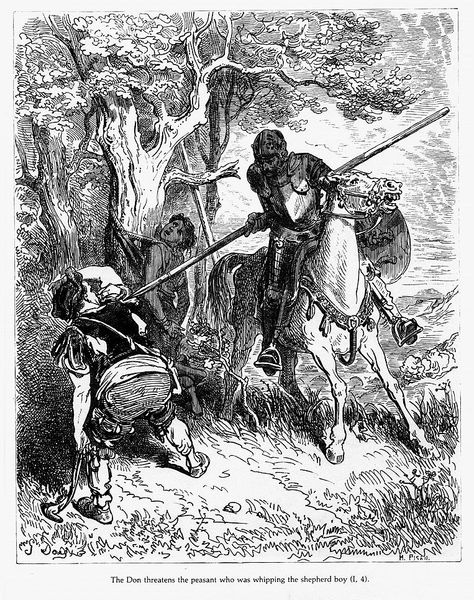
drawing, ink, engraving
#
drawing
#
landscape
#
figuration
#
ink
#
romanticism
#
horse
#
history-painting
#
engraving
Copyright: Public domain
This black and white engraving of Don Quixote was made by the French artist Gustave Dore in the 19th century. It depicts a scene from Miguel de Cervantes' novel where Don Quixote and Sancho Panza observe a group of nobles engaged in a hunt. Dore's illustration reflects a romantic interpretation of Cervantes' work. During this period, Spain experienced significant political upheaval and social change. Cervantes' novel, written in the Golden Age, became a symbol of Spanish identity and cultural heritage, a form of cultural escapism for both the Spanish and the French. Moreover, the rise of illustrated books and magazines in the 19th century provided artists like Dore with new avenues for reaching a wider audience. These illustrations not only visualized the literary text but also shaped its reception and interpretation, reinforcing the novel's status as a classic in both Spanish and European culture. By studying the cultural history of 19th century Europe, we can understand how the meaning of art is contingent on the social, political and institutional context.
Comments
No comments
Be the first to comment and join the conversation on the ultimate creative platform.
